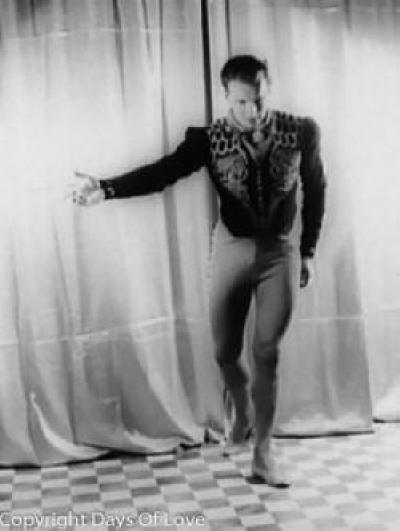

Partner Hugh Laing
Queer Places:
Juilliard School, 60 Lincoln Center Plaza, New York, NY 10023
University of California, Irvine, CA 92697
 Antony Tudor (4 April 1908 – 19 April 1987) was an English ballet
choreographer, teacher and dancer.
Antony Tudor (4 April 1908 – 19 April 1987) was an English ballet
choreographer, teacher and dancer.
Tudor was born William Cook in London.[1] He discovered dance accidentally. Tudor’s first exposure to professional ballet was in his late teens when he first saw Diaghilev's Ballet Russes. He witnessed the dancer Serge Lifar of the Diaghilev Ballet in Balanchine’s Apollon Musagète in 1928. Later, the Ballet Russes would introduce him to Anna Pavlova, whom further inspired his journey into the world of dance. Tudor reached out to Cyril Beaumont, the owner of a ballet book shop in the Charing Cross Road district in London, to seek advice regarding training and was instructed to study with Marie Rambert, a former Diaghilev Ballet dancer who taught the Cecchetti method.
He began dancing professionally with Marie Rambert in 1928, becoming general assistant for her Ballet Club the next year. A precocious choreographer, at age twenty-three he created for her dancers Cross Garter'd, then Lysistrata, The Planets and other works at the little Mercury Theatre, Notting Hill Gate, and his two most revolutionary, Jardin Aux Lilas (Lilac Garden) and Dark Elegies, before the age of thirty, himself dancing the main roles.
In 1938, he founded the London Ballet with Rambert members, including his future life partner, Hugh Laing,[2] Andrée Howard, Agnes de Mille, Peggy van Praagh, Maude Lloyd and Walter Gore. With the onset of World War II, in 1940 he was invited with them to New York, joining Richard Pleasant's and Lucia Chase's reorganized Ballet Theater. Chase's company was later to become the American Ballet Theatre, with which Tudor was closely associated for the rest of his life.
He was a resident choreographer with Ballet Theater for ten years, restaging some of his earlier works but also creating new works, his great Pillar of Fire (1942), Romeo and Juliet, Dim Lustre and Undertow, on that company by the end of the war. Retiring from dancing in 1950, he headed the faculty of the Metropolitan Opera Ballet School, taught at the Juilliard School recurrently from 1950 onwards, and was artistic director for the Royal Swedish Ballet from 1963-64. He choreographed three works for the New York City Ballet. Tudor continued his teaching career as Professor of Ballet Technique at the Department of Dance, University of California, Irvine from 1973 (work curtailed by a serious heart condition), while rejoining American Ballet Theatre in 1974 as associate artistic director, creating The Leaves Are Fading and Tiller In the Fields, his last major work, in 1978. With Laing, he continued seasonal residence in Laguna Beach, California.
Muses in which specific ballets where created for include Maude Lloyd, Hugh Laing and Nora Kaye. While specific ballets were not created for them, Diana Adams and Sallie Wilson can also be considered as muses of Mr. Tudor.
As a teacher, Tudor was known for focusing on physical and psychological details to strip away the ego allowing the dancer to be pushed outside their comfort zone and extend their potential. In an interview with Dick Cavett, Tudor is noted as saying, "You’ve got to get rid of the personal mannerisms to get to the character in the ballet and dancers don't want to let go. Breaking down a person isn't hard. But you cannot break them down unless you are willing to pick up the ashes right away and turn them into the Phoenix. That's the tough thing. You're terribly tempted to lay them flat and walk on them. "
Tudor was awarded a creative arts medal by Brandeis University, the Dance Magazine and Capezio awards, New York City's Handel Medallion, and both Kennedy Center and Dance/USA National Honors.[3] Tudor was inducted into the Mr. & Mrs. Cornelius Vanderbilt Whitney Hall of Fame at the National Museum of Dance in 1988.
My published books:
https://en.wikipedia.org/wiki/Antony_Tudor#References